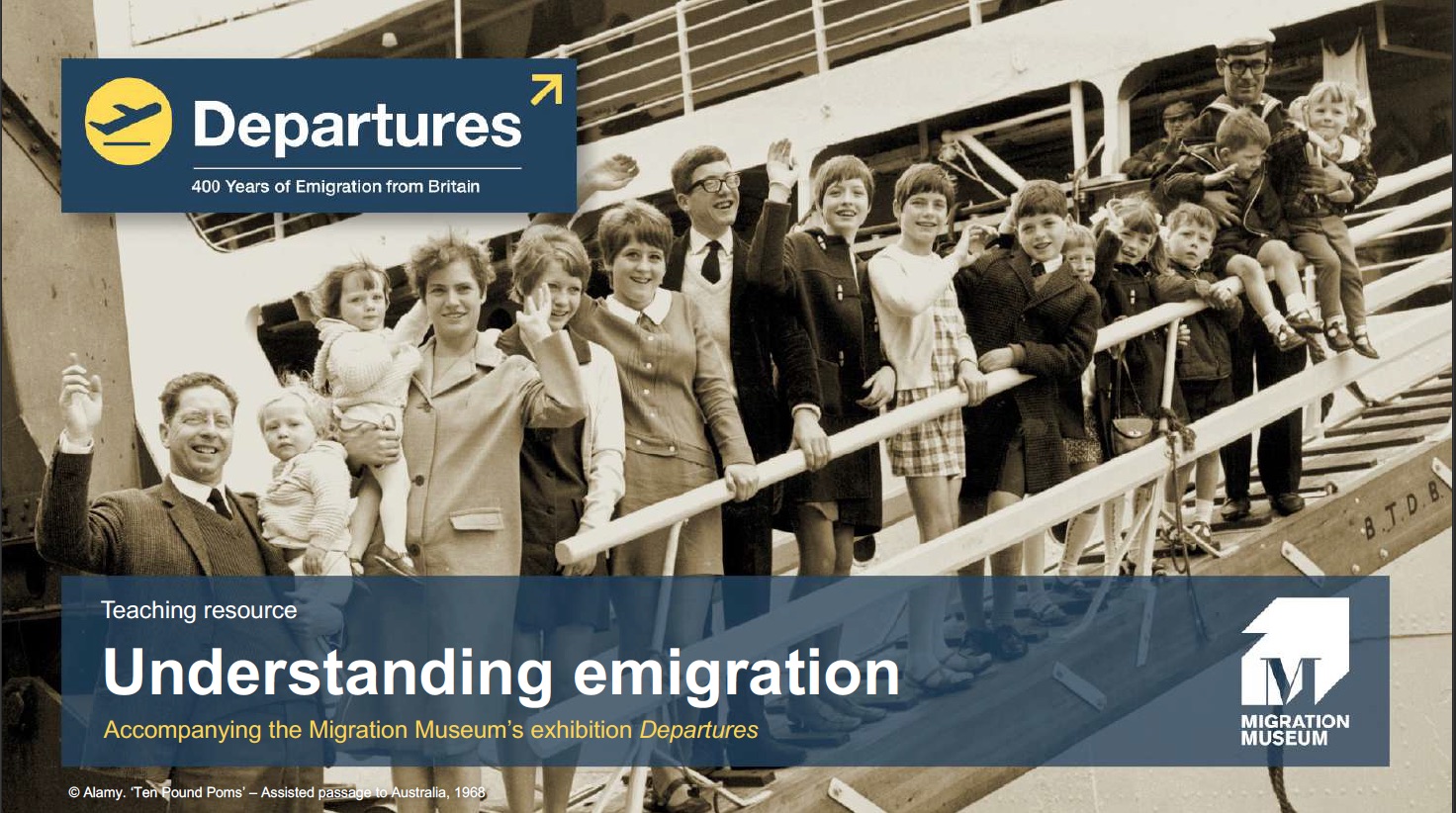1 August, 2022
The NHS is close to all of our hearts – now more than ever. From the very beginning, people have come to Britain from all over the world to make this grand vision for a better society a reality. The NHS would not have become the beloved institution it is today without its international workers. But their vital role has largely been ignored.
Heart of the Nation: Migration and the Making of the NHS is a digital exhibition that puts this vital story at centre stage through oral histories and archival materials, as well as art, animations and data visualisations.
9 December, 2021

Click here to download and view
This free, in-depth resource pack shines a spotlight on 400 years of British emigration – one of the largest movements of people in modern history, yet a history that is often overlooked.
Who are the many millions who have departed these shores and why did they go? Can exploring their motivations help us better understand the motivations of people who arrive? What impact has this mass movement had on the world – and on Britain? Our resource pack features stories spanning four centuries – from Mayflower Pilgrims to Welsh emigrants to South America, Child migration schemes to the Windrush scandal.
This resource pack will be helpful to any student studying the impact of emigration from Britain; both on the countries people emigrated to, and on Britain itself. However, the resource pack is designed specifically for Key Stage 4 students studying GCSE History: AQA’s ‘Migration, Empires and the Peoples’ unit. The pack was designed by David Cox and the Migration Museum, with input from AQA teachers and the board’s History subject advisor.
The Departures: Understanding Emigration resource pack accompanies the Migration Museum’s Departures exhibition, but is designed to be used as a stand-alone resource, or in conjunction with a self-guided or facilitated learning visit to the exhibition. To find out more about organising a visit to Departures for your students, please contact our education manager Liberty Melly: liberty@migrationmuseum.org.
18 January, 2022
This collection of artefacts, historical events and personal stories offers an initial insight, for secondary school students, into the impact of historical genocides.
21 September, 2020
Brick Lane has been described by many as the ‘heartland’ of the Bangladeshi community in Britain, representing five decades of the struggle to belong and be recognised as part of the global city of London and the wider multicultural nation. Perhaps the most visible testament to this presence is ‘Banglatown’ – the short stretch of Bangladeshi-owned curry restaurants, cafés and other retail spaces that crowd the southern end of Brick Lane. The story of Bengali Brick Lane is a lens onto a vibrant but little-known history of the East End, of London, of Britain and its former empire – which is one strand in the tapestry of modern multicultural, post-imperial Britain. It is a story, too, of the street itself, and its iconic place within London and Britain’s history of migration.


